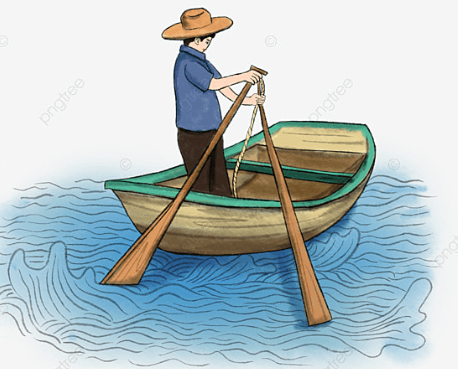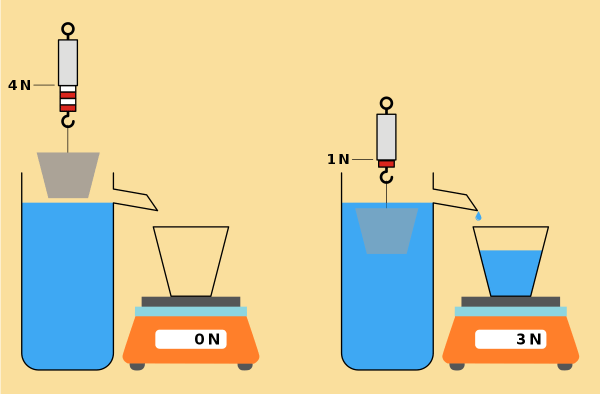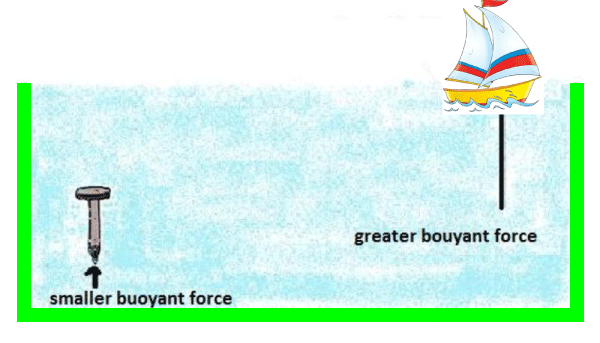What are the Applications of Archimedes' Principal?What is Archimedes' Principle?The scholar and physicist Archimedes of ancient Greece is credited with creating the Archimedes Principle. It claims that an object feels an upward force equivalent to the weight of the fluid displaced when it is partially or entirely submerged in a fluid (liquid or gas). This indicates that the importance of the fluid that the object has moved matches the buoyant force acting on the object. The Principle is based on the fact that fluids exert an upward force on any object placed in them. The buoyancy force is the name given to this energy. The fluid pressing against the item creates buoyant energy. Water pressure rises with depth, so the bottom of an item experiences higher stress than the top. The upward force, also referred to as the buoyancy force, is produced by this pressure differential. The buoyant force acts opposite gravity, which counteracts gravity's downward pull. The buoyant force is higher than the object's weight when it is partly or fully submerged in a fluid, which causes the thing to be propelled upward. The importance of the fluid that the object has moved is equivalent to the upward force. 
What Makes Archimedes' Principle Significant?Archimedes' Principle is beneficial for comprehending how things behave in fluids. It can determine an object's mass and the force of buoyancy acting on it. This can determine how much weight an item will have when submerged in a liquid and how much power will be required to keep it afloat. Additionally helpful in building and construction is Archimedes' Principle. It can be used to design ships and submarines and calculate the forces needed to move them. It can also be used to create buildings and other structures with a better understanding of the forces that act on them. Archimedes' Principle is an important scientific discovery that has profoundly impacted our understanding of objects' behavior in fluids. It is a powerful tool that can be used to calculate the forces on things and the density of objects. It is an essential part of many scientific and engineering applications, and its relevance can still be seen today. Discovery of Buoyant Force?The discovery of buoyant force is credited to the ancient Greek mathematician Archimedes. It is said that he discovered while taking a bath and noticed that the water level rose as he stepped into the bathtub. This led him to realize that there must be a force acting on the body to counter the force of gravity and keep the body afloat. Archimedes was so intrigued by this observation that he ran out of the bathtub naked and shouted, "Eureka!" to proclaim his discovery of buoyancy. This is why "Eureka!" is still used today to express a moment of discovery or insight. Archimedes understood that the force that allowed objects to float was caused by the pressure of the surrounding fluid on the thing. He reasoned that this pressure was more significant at the bottom of the object than at the top and that this pressure difference created an upward force or buoyancy. The significance of this discovery was not fully understood until much later when the scientist and mathematicians of the 17th century began to understand the relationship between pressure, volume, and buoyant force. In 1687, the English mathematician and physicist Isaac Newton published his findings in the Principia, describing the laws of motion and gravity. He explained that the upward force of buoyancy is equal to the weight of the displaced fluid. This is known as the Principle of Buoyancy or Archimedes' Principle. Today, the principles of buoyancy are applied in many different fields. It explains why some objects float while others sink and calculates the force needed to keep an object afloat. It is also used to describe the forces acting on ships and submarines and to design structures that are safe and stable in water, such as bridges and docks. Buoyancy is a fundamental principle of physics used in many science and engineering areas. It allows us to understand why some objects float and why some bodies of water are more buoyant than others. Without Archimedes' discovery, many of the innovations we take for granted today would not exist. 
What are the Applications of Archimedes Principal?The ancient Greek scientist and physicist Archimedes of Syracuse are credited with discovering Archimedes' Principle, which states that an object submerged in a fluid is lifted by force equivalent to the weight of the fluid it has moved. This is why a balloon or a boat floats in the water-the buoyant force is greater than the object's weight. This Principle can be used in many practical applications, such as the design of ships, the measurement of a fluid's density, and the measurement of atmospheric pressure.
Archimedes' Principle has many practical applications in the world today. By understanding the Principle of buoyancy, engineers and scientists can design ships, submarines, airplanes, and other vehicles that are efficient and safe. It can also be used to measure fluids' density and atmospheric pressure. In short, Archimedes' Principle is a powerful tool that can be used to solve many real-world problems. 
Role of Archimedes' Principal in the History of Physics?Archimedes is widely considered one of the most critical figures in physics and mathematics, and his contributions to the fields of science are still felt today. He is credited with discovering the law of the lever, a law of physics that states that an object is in equilibrium when the sum of the forces and torques on the thing is zero. This law is used in many engineering, construction, and physics applications.

Essential Mathematical Formulas Related to Archimedes' Principal1. According to Archimedes' Principle, an object submerged in a fluid is sustained (buoyed up) by force equivalent to the weight of the fluid that the thing has displaced. This can be written mathematically as: Fb = ρgV In this equation, Fb is the buoyancy force, the fluid density, g is the gravitational acceleration, and V is the volume of the shifted fluid. 2. According to Archimedes' Law of Buoyancy, any object wholly or partly submerged in a fluid is buoyed up by force equivalent to the weight of the fluid that the thing has moved. This can be written mathematically as: Fb = mfgd Fb is the buoyancy force, mf is the fluid mass that has been moved, g is the acceleration brought on by gravity, and d is the fluid density. 3. According to Archimedes' Principle of Hydrostatic balance, a fluid in equilibrium applies pressure with the same strength and direction in all locations. This can be written mathematically as: P = ρgh P is the pressure, the fluid's mass, g is its gravitational force, and h is its height. What is the Principle of Floatation?According to the Principle of Floatation, an item will glide if its weight is less than the weight of the water it pushes aside. This Principle is founded on the idea that the importance of the water displaced by an item matches the buoyant force operating on that object. The buoyant force is a fluid's upward force on an immersed object. The difference between the higher pressure beneath the thing and the lower pressure above it is because of the buoyant force. The more water an item displaces and the more buoyant energy it experiences, the heavier it is. An item must have a weight lower than the weight of the water it displaces for it to levitate. This is necessary because the buoyant force must be larger than the gravitational force operating on the item. The item will descend if its weight is higher than the weight of the water it has displaced. The Principle of Floatation explains why some things levitate while others fall. A boat, for example, is made from less dense materials than water. When a ship is placed in the water, it displaces much water, creating a buoyant force more significant than the boat's weight. As a result, the ship floats. On the other hand, rock is made of denser materials than water, displacing a smaller amount of water when placed in the water. Because the buoyant force is not as great as the weight of the rock, the rock sinks.
ConclusionArchimedes' contributions to the field of physics are vast and still felt today. He is credited with introducing the law of the lever, the concept of the center of gravity, and the concept of buoyancy, and he also made significant advances in optics. His most important contribution, however, was the concept of the "infinitesimal," a mathematical concept used in calculus and still used today.
Next TopicAmpere
|
 For Videos Join Our Youtube Channel: Join Now
For Videos Join Our Youtube Channel: Join Now
Feedback
- Send your Feedback to [email protected]
Help Others, Please Share









